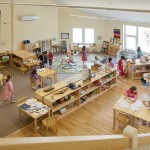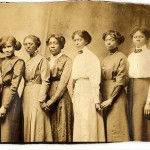As a teacher, I believe that I look forward to Winter Break more than my students. Yet, at the same time, I find myself shaking my head at the idea of two weeks of no instruction. This happens every year. In the past, I crammed in as many lessons as I could and figured out how many projects (aka homework) I could assign to carry them through break in a desperate attempt to keep the learning going. Then, last year, something happened. I became a grandma for the first time and remembered how much more important it is to spend time with family creating memories during the holidays. We only get so many before our children grow up and have children of their own. I remembered that when my girls were little, I hated having to choose between another Christmas book or letting my daughter finish her school assignment. I decided I would not do this to my students and families and set out to find a way to provide meaningful academics that did not impede on the family building opportunities that are unique to the holiday season. In the end, I gave myself a gift that I didn’t know I wanted…I was able to let go!
Step 1: Begin with the end in mind.
Over the summer, I thought about how I wanted the weeks between Thanksgiving and Winter Break to go. I wanted them to have high impact academics that would keep them engaged, solidification of some key skills that they wouldn’t lose over break, a way to maximize the natural excitement of the season, and work at home that they could do (mostly) independently. This took me to the next part.
Step 2: Plan for independence and excitement, then execute
High Impact Academics: I identified key skills in writing, math, and language that the students would need to master in order to independently produce quality work at home with minimal parental support. We began early in the year with the Montessori materials in class so they would have enough time to build up and master independence. Once they mastered the skill in class, they then began to practice at home and taught the skills to their parents who then communicated to me if the child was effective/accurate or not and sent me evidence. Early in the year, I also identified long-range state required skills and targeted a safe landmark for the students to build up to before break.
Use of Curiosity and Imagination: To harvest the natural excitement of the season without over stimulating, I did not plan any out of class activities during these weeks. Instead, they researched how Christmas is celebrated in other countries, the history of Holiday Traditions, made symbolic ornaments for our class tree and studied the stock market. Building off of their interest in songs and Holiday movies, they memorized holiday and winter poems and were introduced to Readers Theater.
Supporting the Family: Most families plan a variety of weekly activities during this season. It is hard on them to also tackle long nights of homework. Therefore, we are taking a different approach. Students use a computer-based program that allowed them to work on individual skills anywhere, anytime. They also have a long-term Science Research Project to work on in increments over several months. It was scheduled so that they are working on the experimental (fun) portion over Winter Break. We are using these two formats to keep the assignments flexible and meaningful.
The Gift of Letting Go: Use of all of these approaches have allowed me to have a less stressful time in class these past few weeks. I am also able to focus on the individual needs of the students while harvesting the energy and excitement of the season. This approach has prevented the burnout, lack of focus, and lethargic behavior that I saw in all of us in past years. I hope you are able to find something between these lines to help you relax, relate, and release as well. Merry Christmas to YOU!









Comments 1
Thanks for this post. It definitely lights a light rather that curses the darkness and demonstrates that taking on a challenge with an end in mind can alleviate much tension and free up time to be more effective.